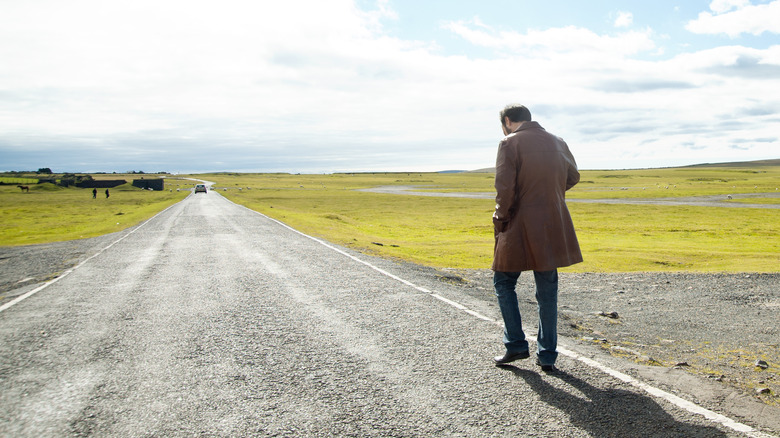When’s the last time you saw someone on the side of the road, thumb hoisted in the air, waiting for a ride from a stranger? The practice of hitchhiking has significantly declined since its heyday in the 1970s, when teenage hippies bummed rides across the U.S. to spread peace, love, and cigarettes.
It could be the recent rise in true crime podcasts, the security promises of third-party services like Uber and Lyft (which might themselves be shadier than they seem), the physical risks of stopping on the highway, or a host of other reasons which have earned hitchhiking a reputation for being both dangerous and illegal, and these days you hardly ever see anyone looking to catch a free ride.
Most states have (often vague) legal parameters on hitchhiking; typical language includes “no person may stand within the roadway of a highway … for the purpose of soliciting a ride” (Vermont) or “No person shall stand on a highway for the purpose of soliciting a ride” (Idaho). But what about soliciting from the side of the road? Even in states that have seemingly stricter “anti-hitchhiking laws,” there’s still some ambiguity — take Nevada, for example. Its state code prohibits pedestrians from walking “along and upon an adjacent highway” when sidewalks are provided, and separately says “a person shall not stand in a highway to solicit a ride.” So technically, you might still be able to solicit a ride from the side of a highway without a sidewalk. No wonder hitchhiking seems like a legal gray area.
Where is hitchhiking legal?
Hitchhiking in the U.S. can be traced back nearly as far as the automotive industry itself. During the Great Depression, hitchhiking was a life-saver for people who couldn’t afford cars. Hitchhiking became a counterculture hallmark in the ’60s and ’70s, with teenagers clamoring to leave ’50s suburbia behind. The practice was romanticized in pop culture, and memoirs have been written about the unique experience of seeing the nation from the highway.
By the mid-’70s, though, hitchhiking began declining as car ownership rose and law enforcement increasingly warned of its dangers. A few hitchhiking-related murders were swept up by the media and then Hollywood around the same time, further tarnishing the practice’s former reputation as generous and compassionate. Today, the practice is nearly obsolete in the U.S. Yet obsolete and illegal are two different things. There’s no federal law prohibiting hitchhiking, and laws about it vary state by state.
Hitchhiking is fully legal in some states, including South Dakota, Wyoming, and Utah. Most other states that have legal parameters for soliciting rides enforce something like California’s law, which says “No person shall stand in a roadway for the purpose of soliciting a ride from the driver of any vehicle,” implying that hitchhiking is legal from the side of the road. Arizona, Colorado, Illinois, Georgia, and many other states use nearly identical language to set parameters on hitchhiking but keep it legal.
Even a stricter state like Maine, which generally prohibits hitchhiking, makes allowances for it if illness or accident creates an emergency. So if your primary reservation about hitchhiking was its legality (or lack thereof), you’re in luck — in most states, there’s ample legal room to position yourself for a free ride.


